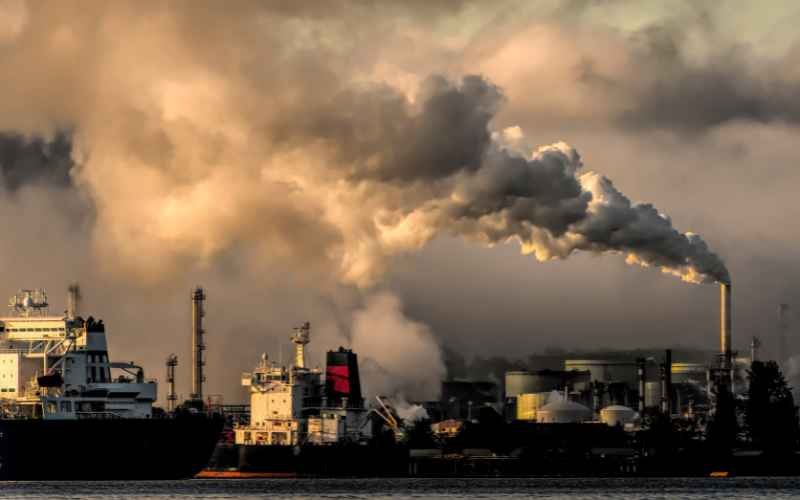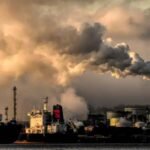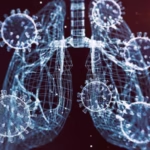The air we breathe is not merely empty space; it’s a dynamic mixture of gases that sustain life on Earth. Oxygen, nitrogen, carbon dioxide, and trace gases form this delicate blend, providing the essential elements for respiration, photosynthesis, and atmospheric processes. This atmospheric composition has evolved over millions of years to support diverse ecosystems and enable the flourishing of countless species, including humans.

However, this atmospheric equilibrium is increasingly under threat due to human activities. Industrialization, urbanization, transportation, and agricultural practices have led to the release of pollutants into the atmosphere at unprecedented rates. These pollutants, ranging from gases to particulate matter, disrupt the natural balance of the atmosphere and pose significant risks to both human health and the environment.
The consequences of air pollution are profound and far-reaching. From smog-choked cities to polluted waterways and devastated ecosystems, the impacts are evident on a global scale. Human health suffers as respiratory illnesses, cardiovascular diseases, and other health complications become more prevalent, particularly in areas with high levels of pollution. Vulnerable populations, such as children, the elderly, and those with pre-existing health conditions, are particularly at risk.
Primary Air Pollutants:
Primary air pollutants constitute a significant portion of the pollutants present in the Earth’s atmosphere. These pollutants are emitted directly from various identifiable sources, both natural and anthropogenic, contributing to environmental degradation and posing significant health risks to humans and ecosystems.
- Carbon Monoxide (CO): CO is a colorless, odorless gas primarily emitted from incomplete combustion processes, such as those occurring in vehicle engines, industrial facilities, and residential heating systems. Exposure to high levels of CO can lead to headaches, dizziness, nausea, and in severe cases, death.
- Sulfur Dioxide (SO2): SO2 is produced by burning fossil fuels containing sulfur, such as coal and oil, in industrial processes and power plants. It is also released during volcanic eruptions. SO2 can react with other compounds in the atmosphere to form harmful particulate matter and acid rain, leading to respiratory problems and damage to vegetation and infrastructure.
- Nitrogen Oxides (NOx): NOx compounds, including nitrogen dioxide (NO2) and nitric oxide (NO), are emitted from combustion processes, particularly in vehicles and industrial facilities. They contribute to the formation of ground-level ozone and fine particulate matter, which can exacerbate respiratory illnesses, trigger asthma attacks, and impair lung function.
- Particulate Matter (PM): PM refers to a mixture of solid particles and liquid droplets suspended in the air. These particles vary in size, with fine particles (PM2.5) and coarse particles (PM10) being the most concerning for human health. PM is emitted from various sources, including vehicle exhaust, industrial activities, construction sites, and wildfires. Inhalation of PM can penetrate deep into the lungs, leading to respiratory and cardiovascular problems, including lung cancer and heart disease.
- Volatile Organic Compounds (VOCs): VOCs are a diverse group of organic chemicals that vaporize at room temperature. They are emitted from various sources, including vehicle emissions, industrial processes, and household products such as paints, solvents, and cleaners. VOCs contribute to the formation of ground-level ozone and smog, which can irritate the respiratory system, trigger asthma attacks, and damage vegetation.
- Ammonia (NH3): NH3 is primarily emitted from agricultural activities, including fertilizer application and livestock waste. It can react with other pollutants in the atmosphere to form fine particulate matter and contribute to the formation of secondary pollutants like ammonium nitrate. Exposure to high levels of ammonia can cause respiratory irritation and contribute to the formation of haze and acid deposition.
These primary air pollutants have immediate and direct impacts on human health, contributing to respiratory diseases, cardiovascular issues, and even premature death. Additionally, they play a significant role in environmental processes such as the formation of smog, acid rain, and climate change, highlighting the importance of mitigating their emissions through regulatory measures and technological advancements.
Secondary Air Pollutants:
Secondary air pollutants are formed through intricate chemical reactions involving primary pollutants and other atmospheric components. Unlike primary pollutants, they are not emitted directly into the atmosphere but rather result from the transformation of precursor substances through various atmospheric processes. Common secondary pollutants include ozone (O3), sulfuric acid (H2SO4), nitric acid (HNO3), and particulate matter such as sulfate and nitrate particles.
- Ozone (O3): Ozone is a secondary pollutant formed when nitrogen oxides (NOx) and volatile organic compounds (VOCs) react in the presence of sunlight. These precursor pollutants are emitted from sources like vehicle exhaust, industrial emissions, and natural sources. Ozone is a major component of smog and can cause respiratory problems, eye irritation, and damage to vegetation.
- Sulfuric Acid (H2SO4) and Nitric Acid (HNO3): These acids are secondary pollutants formed when sulfur dioxide (SO2) and nitrogen oxides (NOx) react with atmospheric moisture and oxygen. Sulfuric acid and nitric acid contribute to acid rain, which can damage ecosystems, corrode buildings and infrastructure, and harm aquatic life.
- Particulate Matter (Sulfate and Nitrate Particles): Sulfate and nitrate particles are secondary pollutants formed through the atmospheric transformation of sulfur dioxide (SO2) and nitrogen oxides (NOx), respectively. These particles can contribute to haze, reduce visibility, and have adverse effects on human health when inhaled, similar to primary particulate matter.
The formation and distribution of secondary pollutants are influenced by various factors such as temperature, humidity, sunlight intensity, and atmospheric stability. Atmospheric reactions involving secondary pollutants are often complex and dynamic, leading to variations in pollutant concentrations over time and space.
Efforts to mitigate secondary air pollutants often involve controlling the emissions of precursor pollutants (e.g., NOx, SO2, VOCs) and implementing measures to reduce the formation of secondary pollutants through improved air quality management strategies. These may include the promotion of cleaner technologies, the implementation of emission controls on industrial sources and vehicles, and the development of urban planning policies aimed at reducing traffic congestion and promoting sustainable transportation options. Additionally, public awareness and education campaigns can play a crucial role in reducing emissions and minimizing the impacts of secondary pollutants on human health and the environment.
Understanding the Interplay:
Understanding the interplay between primary and secondary pollutants in the atmosphere is crucial for comprehensively addressing air quality issues. While primary pollutants are emitted directly into the atmosphere from identifiable sources, secondary pollutants form through chemical reactions involving primary pollutants and other atmospheric components. However, the distinction between primary and secondary pollutants is not always straightforward, as some pollutants can serve as both depending on the circumstances.
One example of this interplay is with nitrogen oxides (NOx). NOx compounds are primary pollutants emitted directly from sources such as vehicles, industrial facilities, and power plants. However, once in the atmosphere, NOx can undergo further reactions, particularly in the presence of sunlight and volatile organic compounds (VOCs), to form secondary pollutants such as ozone (O3) and nitric acid (HNO3). This transition from primary to secondary pollutants demonstrates the complex nature of atmospheric chemistry and the interconnectedness of different pollutants.
The transformation of nitrogen oxides into ozone highlights the dynamic nature of air pollution. Ozone, while considered a secondary pollutant, can have significant impacts on human health and the environment. It is a major component of smog and can cause respiratory problems, eye irritation, and damage to vegetation. Therefore, the understanding of how primary pollutants contribute to the formation of secondary pollutants is essential for developing effective air quality management strategies.
Additionally, factors such as temperature, humidity, sunlight intensity, and atmospheric stability can influence the formation and distribution of secondary pollutants. Atmospheric reactions involving primary and secondary pollutants are often complex and dynamic, leading to variations in pollutant concentrations over time and space. As such, efforts to mitigate air pollution must consider both primary emissions and secondary pollutant formation to effectively improve air quality and protect public health and the environment.
Addressing the interplay between primary and secondary pollutants requires a multi-faceted approach, including reducing emissions of primary pollutants through cleaner technologies and emission controls, controlling precursor pollutants that contribute to secondary pollutant formation, and implementing measures to mitigate the impacts of secondary pollutants on human health and the environment. Additionally, continued research into atmospheric chemistry and the interactions between different pollutants is essential for informing evidence-based air quality management policies and strategies.
Impacts on Health and Environment:
The impacts of both primary and secondary pollutants on human health and the environment are profound and wide-ranging. Here’s a breakdown of their effects:
Health Impacts:
- Respiratory and Cardiovascular Health: Primary pollutants such as particulate matter (PM), nitrogen oxides (NOx), and volatile organic compounds (VOCs) directly affect respiratory health, leading to conditions such as asthma, bronchitis, and respiratory infections. These pollutants can also exacerbate cardiovascular issues, including heart attacks and strokes.
- Ozone Effects: Secondary pollutants like ozone (O3) can irritate the respiratory system, trigger asthma attacks, and cause lung inflammation. Long-term exposure to ozone can lead to reduced lung function and chronic respiratory diseases.
- Particulate Matter: Fine particulate matter (PM2.5) can penetrate deep into the lungs and enter the bloodstream, causing a range of health problems, including lung cancer, cardiovascular diseases, and premature death.
- Volatile Organic Compounds (VOCs): VOCs contribute to the formation of ground-level ozone and smog, which can worsen respiratory conditions and pose health risks, particularly to vulnerable populations such as children, the elderly, and individuals with pre-existing health conditions.
Environmental Impacts:
- Acid Rain: Primary pollutants like sulfur dioxide (SO2) and nitrogen oxides (NOx) contribute to the formation of sulfuric acid (H2SO4) and nitric acid (HNO3), which can lead to acid rain. Acid rain damages forests, soils, freshwater ecosystems, and infrastructure.
- Smog Formation: Secondary pollutants such as ozone and particulate matter contribute to the formation of smog, which reduces visibility and poses health risks to humans and ecosystems. Smog also has detrimental effects on crops and vegetation.
- Ecosystem Degradation: Air pollution affects biodiversity and ecosystem health by harming plants, animals, and microorganisms. Pollutants like ozone damage plant foliage, reduce crop yields, and disrupt ecosystems’ natural balance.
- Water Quality: Air pollutants can deposit onto land and water bodies, leading to the contamination of surface water and groundwater. This pollution can affect aquatic organisms, disrupt ecosystems, and compromise water quality for human consumption and recreational use.
Addressing the impacts of air pollution requires a coordinated effort involving governments, industries, communities, and individuals. Strategies for mitigating air pollution include implementing cleaner technologies, improving fuel efficiency, promoting renewable energy sources, enhancing public transportation systems, and implementing policies and regulations to reduce emissions from industrial sources and vehicles. Additionally, public awareness campaigns and community engagement are essential for fostering behavioral changes that contribute to reducing air pollution and protecting human health and the environment.
Mitigation Strategies:
Mitigating air pollution requires a multifaceted approach that addresses both primary and secondary pollutants while promoting sustainable practices and technologies. Here are some key mitigation strategies:
- Stringent Emission Standards: Implementing and enforcing strict emission standards for vehicles, industrial facilities, power plants, and other sources of pollution can significantly reduce the release of primary pollutants into the atmosphere. These standards often include limits on emissions of nitrogen oxides (NOx), sulfur dioxide (SO2), particulate matter (PM), volatile organic compounds (VOCs), and other harmful substances.
- Cleaner Technologies: Promoting the adoption of cleaner technologies and practices can help reduce emissions of both primary and secondary pollutants. This includes investing in fuel-efficient vehicles, cleaner fuels, and energy-efficient appliances, as well as implementing advanced pollution control technologies in industrial processes.
- Public Transportation: Improving public transportation infrastructure and encouraging the use of public transit, cycling, and walking can help reduce vehicle emissions, congestion, and air pollution in urban areas. Investing in electric and hybrid vehicles and expanding public charging infrastructure can further accelerate the transition to cleaner transportation options.
- Renewable Energy Sources: Transitioning to renewable energy sources such as solar, wind, and hydropower can help reduce emissions of greenhouse gases and other pollutants associated with fossil fuel combustion. Increasing investment in renewable energy infrastructure and incentivizing renewable energy development can contribute to cleaner air and a healthier environment.
- Reducing Precursor Pollutants: Targeted measures to reduce emissions of precursor pollutants, such as nitrogen oxides (NOx) and volatile organic compounds (VOCs), can help mitigate the formation of secondary pollutants like ozone and particulate matter. This may involve implementing emissions controls, improving fuel quality, and promoting the use of low-emission technologies in sectors such as transportation, industry, and agriculture.
- Land Use Planning: Implementing smart land use planning strategies, such as promoting mixed land use, compact development, and green spaces, can help reduce vehicle miles traveled, alleviate traffic congestion, and mitigate air pollution in urban areas. Encouraging sustainable urban design and development practices can also help improve air quality and public health.
- Policy and Regulation: Enacting and enforcing policies and regulations aimed at reducing air pollution emissions, protecting air quality, and promoting sustainable practices is essential for driving systemic change. This may include establishing emission standards, implementing pollution control measures, imposing pollution taxes or fees, and incentivizing cleaner technologies and behaviors through economic incentives and subsidies.
By implementing these mitigation strategies in a coordinated and sustained manner, policymakers, industries, communities, and individuals can work together to address air pollution effectively, protect public health, and safeguard the environment for current and future generations.
Conclusion:
The distinction between primary and secondary air pollutants underscores the complexity of air pollution and the need for multifaceted solutions. By understanding the sources, formation mechanisms, and impacts of these pollutants, we can develop targeted strategies to safeguard human health and the environment. From regulatory measures to technological innovations, collective action is essential to combatting the pervasive threat of air pollution and ensuring a cleaner, healthier future for generations to come.
Top 20 FAQs about Unveiling the Layers of Air Pollution: Primary and Secondary Air Pollutants
- What are primary air pollutants?
- Primary air pollutants are directly emitted into the atmosphere from identifiable sources, including carbon monoxide (CO), sulfur dioxide (SO2), nitrogen oxides (NOx), particulate matter (PM), volatile organic compounds (VOCs), and ammonia (NH3).
- What are secondary air pollutants?
- Secondary air pollutants are formed through chemical reactions involving primary pollutants and other atmospheric components. Common examples include ozone (O3), sulfuric acid (H2SO4), nitric acid (HNO3), and particulate matter such as sulfate and nitrate particles.
- What are the sources of primary air pollutants?
- Sources of primary air pollutants include vehicular emissions, industrial activities, power plants, residential heating systems, natural phenomena like volcanic eruptions and wildfires, and agricultural activities.
- How do primary pollutants affect human health?
- Primary pollutants can have immediate and direct impacts on health, contributing to respiratory diseases, cardiovascular issues, and even premature death. They can cause symptoms such as headaches, dizziness, nausea, and respiratory irritation.
- What are the impacts of secondary pollutants on health and the environment?
- Secondary pollutants, such as ozone and particulate matter, can exacerbate respiratory conditions, cause lung damage, contribute to acid rain and smog formation, and harm biodiversity and water quality.
- What factors influence the formation of secondary pollutants?
- Factors such as temperature, humidity, sunlight intensity, atmospheric stability, and the presence of precursor pollutants influence the formation and distribution of secondary pollutants.
- How does nitrogen oxide transition from primary to secondary pollutants?
- Nitrogen oxides emitted directly from vehicles or industrial sources can undergo further reactions in the atmosphere, particularly in the presence of sunlight and volatile organic compounds (VOCs), to form ozone, transitioning from primary to secondary pollutants.
- What are some mitigation strategies for primary air pollutants?
- Mitigation strategies for primary air pollutants include implementing stringent emission standards, promoting cleaner technologies, enhancing public transportation, and investing in renewable energy sources.
- How can we reduce emissions of precursor pollutants to mitigate secondary pollutant formation?
- Targeted measures such as emissions controls, improving fuel quality, and promoting low-emission technologies can help reduce emissions of precursor pollutants like nitrogen oxides and volatile organic compounds, thus mitigating the formation of secondary pollutants.
- What role does land use planning play in addressing air pollution?
- Land use planning strategies, such as promoting mixed land use, compact development, and green spaces, can help reduce vehicle miles traveled, alleviate traffic congestion, and mitigate air pollution in urban areas.
- How do emission standards contribute to air quality improvement?
- Emission standards set limits on the amount of pollutants that can be emitted from various sources, helping to reduce the release of harmful substances into the atmosphere and improve air quality.
- What are some examples of cleaner technologies that can help reduce air pollution?
- Examples of cleaner technologies include fuel-efficient vehicles, energy-efficient appliances, advanced pollution control technologies in industrial processes, and renewable energy sources such as solar and wind power.
- How does air pollution impact climate change?
- Air pollutants such as carbon dioxide (CO2), methane (CH4), and black carbon (soot) contribute to climate change by trapping heat in the atmosphere, leading to global warming and changes in weather patterns.
- What are the economic costs of air pollution?
- The economic costs of air pollution include healthcare expenses related to treating air pollution-related illnesses, lost productivity due to illness and premature death, damage to crops and ecosystems, and the costs of implementing pollution control measures.
- How can individuals contribute to reducing air pollution?
- Individuals can contribute to reducing air pollution by using public transportation, carpooling, biking, or walking instead of driving alone, conserving energy at home, reducing waste and recycling, and supporting policies and initiatives aimed at improving air quality.
- What are the health effects of long-term exposure to air pollution?
- Long-term exposure to air pollution has been linked to an increased risk of respiratory and cardiovascular diseases, lung cancer, stroke, and premature death, as well as adverse effects on cognitive function and reproductive health.
- How does air pollution affect children and vulnerable populations?
- Children, the elderly, pregnant women, and individuals with pre-existing health conditions are particularly vulnerable to the health effects of air pollution due to their developing or weakened immune systems and increased susceptibility to respiratory and cardiovascular illnesses.
- What are some indicators of air quality?
- Common indicators of air quality include levels of criteria air pollutants such as PM2.5, ozone, carbon monoxide, sulfur dioxide, nitrogen dioxide, and lead, as well as visibility, odor, and the presence of air pollution-related health symptoms.
- How does indoor air pollution compare to outdoor air pollution?
- Indoor air pollution can be as harmful as outdoor air pollution, with sources such as cooking, heating, smoking, and household products releasing pollutants like carbon monoxide, nitrogen dioxide, volatile organic compounds, and particulate matter into the air.
- What are some international efforts to address air pollution?
- International efforts to address air pollution include agreements such as the Paris Agreement, which aims to limit global warming and reduce greenhouse gas emissions, as well as initiatives by organizations like the World Health Organization (WHO) and the United Nations Environment Programme (UNEP) to promote air quality monitoring, research, and policy development worldwide.
Related posts:
 Breathing in Danger: Understanding the Impact of Air Pollution
Breathing in Danger: Understanding the Impact of Air Pollution
 Breath of Fresh Air: A Call to Action Against Air Pollution
Breath of Fresh Air: A Call to Action Against Air Pollution
 When Should You Eat, Before or After Exercise?
When Should You Eat, Before or After Exercise?
 “WellHealthOrganic: Nurturing Stress Management”
“WellHealthOrganic: Nurturing Stress Management”
 Air Pollution Exacerbates Sleep Apnea Risk and Severity, Finds New Study
Air Pollution Exacerbates Sleep Apnea Risk and Severity, Finds New Study
 The Deafening Truth: How Traffic Noise Raises the Risk of Cardiovascular Diseases
The Deafening Truth: How Traffic Noise Raises the Risk of Cardiovascular Diseases
 The Silent Threat: Childhood High Blood Pressure Raises Risk of Heart Attack and Stroke
The Silent Threat: Childhood High Blood Pressure Raises Risk of Heart Attack and Stroke
 Say No to Tea and Coffee Before and After Meals, Advises Top Medical Body ICMR
Say No to Tea and Coffee Before and After Meals, Advises Top Medical Body ICMR
 Cherries to Bananas: 5 Superfoods to Help You Get a Restful Night of Sleep
Cherries to Bananas: 5 Superfoods to Help You Get a Restful Night of Sleep





